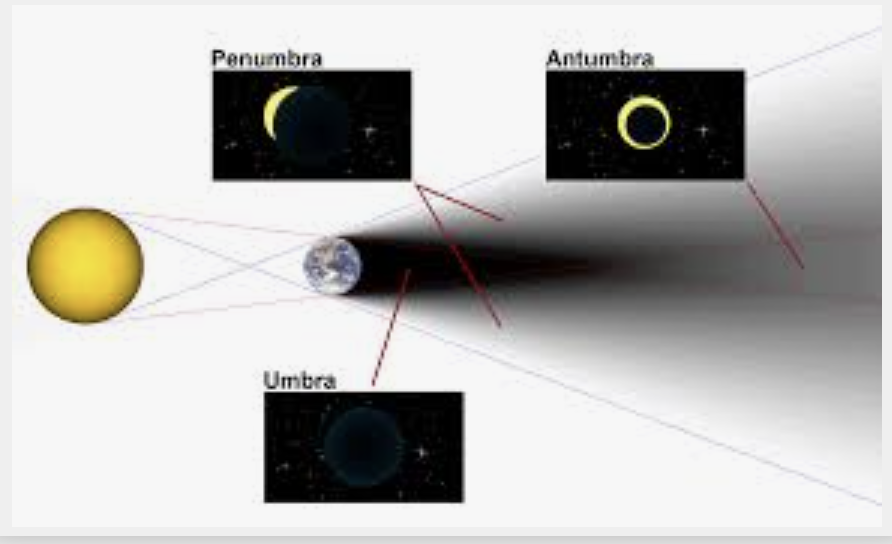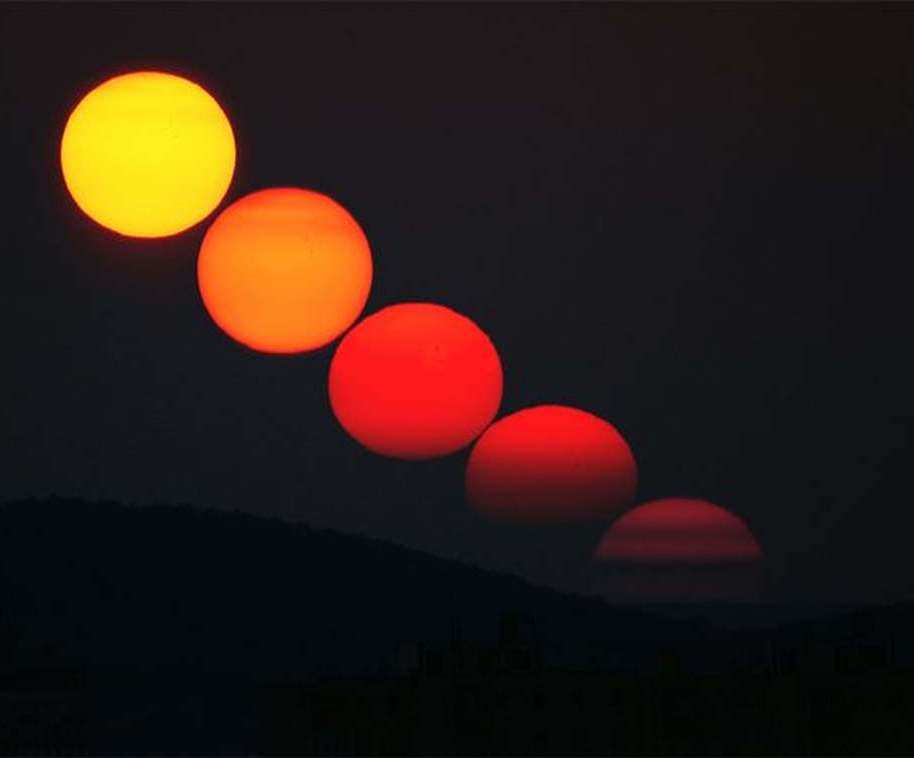SOLAR AND LUNAR ECLIPSES

Eclipse Geometry and Eclipse Seasons

Eclipse Geometry and Eclipse Seasons


The complete blocking of the Sun, the dark shadow is the Umbra. The partial blocking of the Sun, the incomplete shadow is the Penumbra. If the distance between the Moon and Earth is too large, the umbral shadow will not reach the Earth and we will have what is called an Annular Eclipse.
In general, far more people have seen total lunar eclipses than total solar eclipses. Why is this true?
 Moon is reddish during total eclipse |
 Setting Sun is reddish |
 |
We see that solar eclipses may occur when the moon is new and lunar eclipses may occur when the moon is full. Wait a minute. New moon and full moon occur every month but there are eclipse seasons which recur roughly every 6 months (during eclipse seasons).
A nice reference: eclipse.gsfc.nasa.gov/eclipse.html
